eCommerce for Clothing Retailers: Launching an Online Clothing Store – A Comprehensive Guide
The world of retail is increasingly shifting online, and launching an online clothing store offers a promising avenue for success. With the right approach, you can tap into a vast market and build a thriving business. Here’s a comprehensive guide to help you navigate the essential steps to start and run a successful online clothing store.
![[object Object]](https://clipl-web1.sgp1.cdn.digitaloceanspaces.com/images/clzmeq0ec00t632qg89dthstg.png)
- Conduct Market Research: Before diving into the online clothing business, it’s crucial to conduct thorough market research. Identify your target audience, analyze competitors, and understand current fashion trends. Research will help you determine the types of clothing that are in demand, your ideal customer profile, and the competitive landscape. Use this information to define your niche and create a unique value proposition.
- Create a Business Plan: A well-thought-out business plan serves as a roadmap for your online clothing store. Outline your business goals, target market, product offerings, pricing strategy, marketing plan, and financial projections. Your business plan will guide your decisions and help you secure funding if needed. Include details on your supply chain, inventory management, and customer service strategies.
- Choose a Business Name and Domain: Select a memorable and relevant name for your online clothing store that reflects your brand’s identity. Check for domain name availability and secure a domain that matches your business name. Your domain name should be easy to remember and spell, making it simple for customers to find your store online.
![[object Object]](https://clipl-web1.sgp1.cdn.digitaloceanspaces.com/images/clu85g32c004p4irz90k4e9u5.png)
- Design Your Brand Identity: Your brand identity encompasses your logo, color scheme, typography, and overall design aesthetic. Invest in professional branding to create a cohesive and appealing look for your online store. Your brand identity should resonate with your target audience and convey the essence of your clothing line. Consistent branding across your website and marketing materials will help build brand recognition.
- Set Up Your Online Store: Choose an eCommerce platform that suits your business needs. Popular options include Shopify, WooCommerce, and Magento. Your eCommerce platform should offer features like product management, payment processing, inventory tracking, and customer support. Customize your store’s design to align with your brand identity and ensure a user-friendly shopping experience.
- Source Your Products: Decide whether you will manufacture your own clothing, source from wholesalers, or use dropshipping. Each option has its advantages and considerations. If manufacturing, find reliable suppliers and ensure high-quality production. For wholesale or dropshipping, establish relationships with reputable vendors and verify their product quality and reliability.
![[object Object]](https://clipl-web1.sgp1.cdn.digitaloceanspaces.com/images/clu85gvvd004t4irzgz1cbrbk.png)
- Implement Secure Payment Gateways: Offering secure and convenient payment options is crucial for building customer trust and ensuring smooth transactions. Integrate reliable payment gateways such as PayPal, Stripe, or Square into your online store. Ensure that your payment processing is secure and compliant with industry standards to protect customer information.
- Develop a Shipping and Fulfillment Strategy: Plan your shipping and fulfillment processes to ensure timely and accurate delivery of orders. Choose reliable shipping partners and determine your shipping rates and policies. Consider offering multiple shipping options, including express and international delivery. Implement efficient order fulfillment practices to manage inventory and handle returns or exchanges effectively.
- Create Compelling Product Listings: Your product listings should be detailed, visually appealing, and optimized for search engines. Include high-quality images, thorough product descriptions, sizing information, and pricing. Use persuasive language to highlight the unique features and benefits of your clothing. Optimize your listings with relevant keywords to improve search visibility.
![[object Object]](https://clipl-web1.sgp1.cdn.digitaloceanspaces.com/images/clw7brmcu003i4crzaqo7ekp4.png)
- Implement Effective Marketing Strategies: Develop a marketing plan to drive traffic to your online clothing store and increase sales. Utilize a mix of digital marketing strategies, including social media marketing, email marketing, content marketing, and search engine optimization (SEO). Create engaging content, run promotions, and leverage influencers or fashion bloggers to reach a wider audience.
- Focus on Customer Service: Excellent customer service is essential for building customer loyalty and driving repeat business. Offer multiple channels for customer support, such as live chat, email, and phone. Provide timely responses to inquiries, resolve issues promptly, and ensure a seamless shopping experience. Consider implementing a customer loyalty program to reward repeat customers and encourage referrals.
- Monitor and Analyze Performance: Regularly track and analyze your online store’s performance using analytics tools. Monitor key metrics such as website traffic, conversion rates, average order value, and customer acquisition costs. Use this data to identify trends, measure the effectiveness of your marketing efforts, and make informed decisions to optimize your store’s performance.
Conclusion
Launching an online clothing store involves careful planning and execution, but with the right strategies, you can build a successful business that resonates with customers. From market research and branding to setting up your store and implementing effective marketing, each step plays a crucial role in your store’s success. Follow this comprehensive guide to navigate the complexities of eCommerce and create a thriving online clothing business.
For further assistance in setting up your online store or to explore additional resources, contact us at [email protected] or call +91 987 133 9998.























